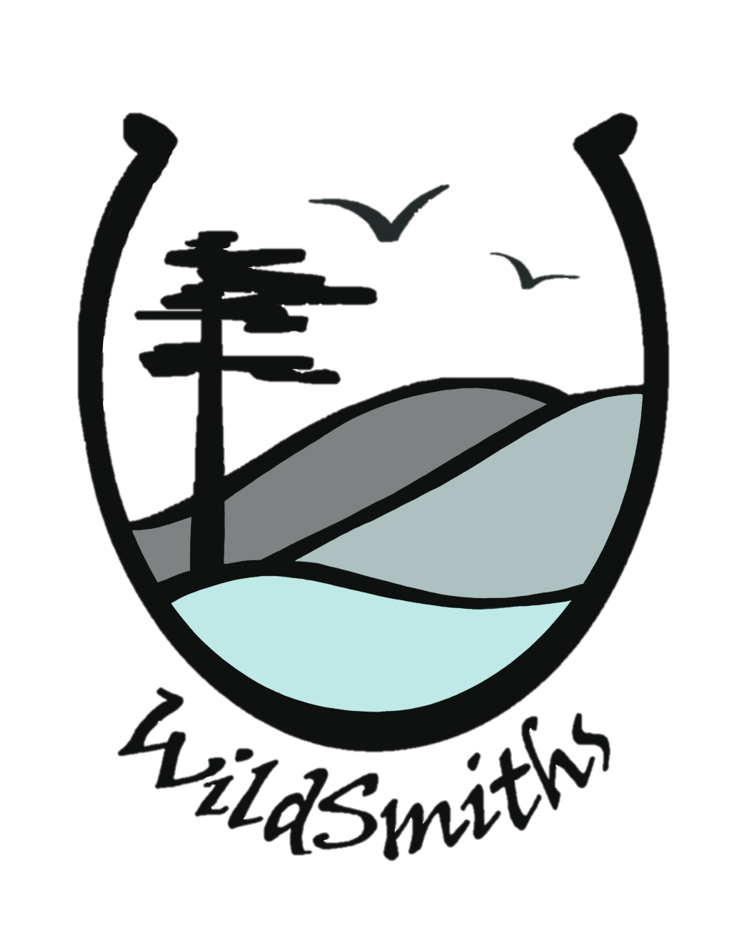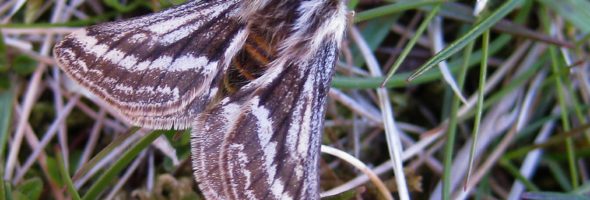
Two interesting insects, that WildSmiths always love to see on the Isle of Coll, are the short-necked oil beetle and the belted beauty moth. They are both very rare nationally but are regularly seen on this tiny island. As ‘flightless fliers’, the pair of them also illustrate the extraordinary and wonderful complexity of nature.
Let’s start with the moth: a distinctive and charming species, restricted in its range to just a few coastal sites in north-west England, north Wales and the west coast of Scotland, becoming a little more frequent on the outer Hebrides. On Coll, the species-rich machair grasslands provide the perfect habitat for it. It has catholic tastes and its caterpillars munch their way through a variety of food plants, including birds-foot trefoil, kidney vetch, red clover and ribwort plantain, all of which grow widely on the machair.
Sarah and I were thrilled when we first found a belted beauty on Coll because its close relative, the brindled beauty, is familiar to us back home in Essex. We’ve often seen the ‘belted’ next to the ‘brindled’ in the books, but never expected to see the former in the flesh. Interestingly, and in contrast to its relative which is more strictly nocturnal, we have found both male and female belted beauties out on the machair in the middle of the day, as the photos on this page testify.
Every moth has its day, and the belted beauty is a moth of the start of the year, seen between March and early May. In common with many early season moths, the male and female look very different (in scientific parlance they display ‘sexual dimorphism’). The male is a charming furry chap, sporting pinky-orange hoops on his body and grey and brown stripes on his swept-back wings. He also has big feathery antennae. The female, although she has the same colourful, hooped pattern on her body, has just short stumps where her wings should be (‘brachyptery’ is the technical term for this). She looks more like a furry woodlouse than a moth. She has given up on flight entirely and spends her short life sat on a plant stem pumping out pheromones which attract the flying males – hence their feathered antennae. After mating, she gets on with the job of egg-laying.

So the capacity of a population of belted beauties to find and exploit new habitats is limited to how far the female can waddle, before being overcome by the urge to lay her eggs, or to how far her caterpillars wander before they pupate. Essentially, species that adopt female brachyptery have made an evolutionary compromise: let’s not waste energy on wings and flight muscles, let’s prioritise egg-laying (putting all their eggs into one basket, as it were).
You can see that giving up on the means of geographical dispersal in order to concentrate on filling the available habitat with your progeny might work well in situations where there is plenty of available habitat, good habitat continuity (as in these coastal situations) and a stable environment. And it is a strategy that has evolved again and again in many different moth families (an example of ‘repeated parallel evolution’), so it clearly does work.
But what if the climate starts to change and change rapidly as it is now? Well, the belted beauty moth, lacking the means of upping sticks and re-establishing itself in pastures new, might begin to struggle. It is already in difficulties in those English and Welsh sites I mentioned earlier. For how long will it flourish here on Coll? We don’t know, but if you want to join WildSmiths for a walk across the machair in April and early May, we’ll try to help you enjoy it while you can.




I just saw your tweet about the Belted Beauty in my “moth stream” on twitter, a pleasing coincidence as we are hopefully visiting Coll in May and I’ve been researching what we might catch in our moth trap when we are there, sadly to late for the Belted Beauty! Hopefully we’ll be in touch nearer the time to arrange a walk. At the moment we are trying not to get too excited in case we have to cancel again!
Lovely to hear from you. We have seen them up here in early May so not all hope is lost! Yes please do get in touch if (when?!) you make it across to us. Very happy to offer mothing advice. Greg